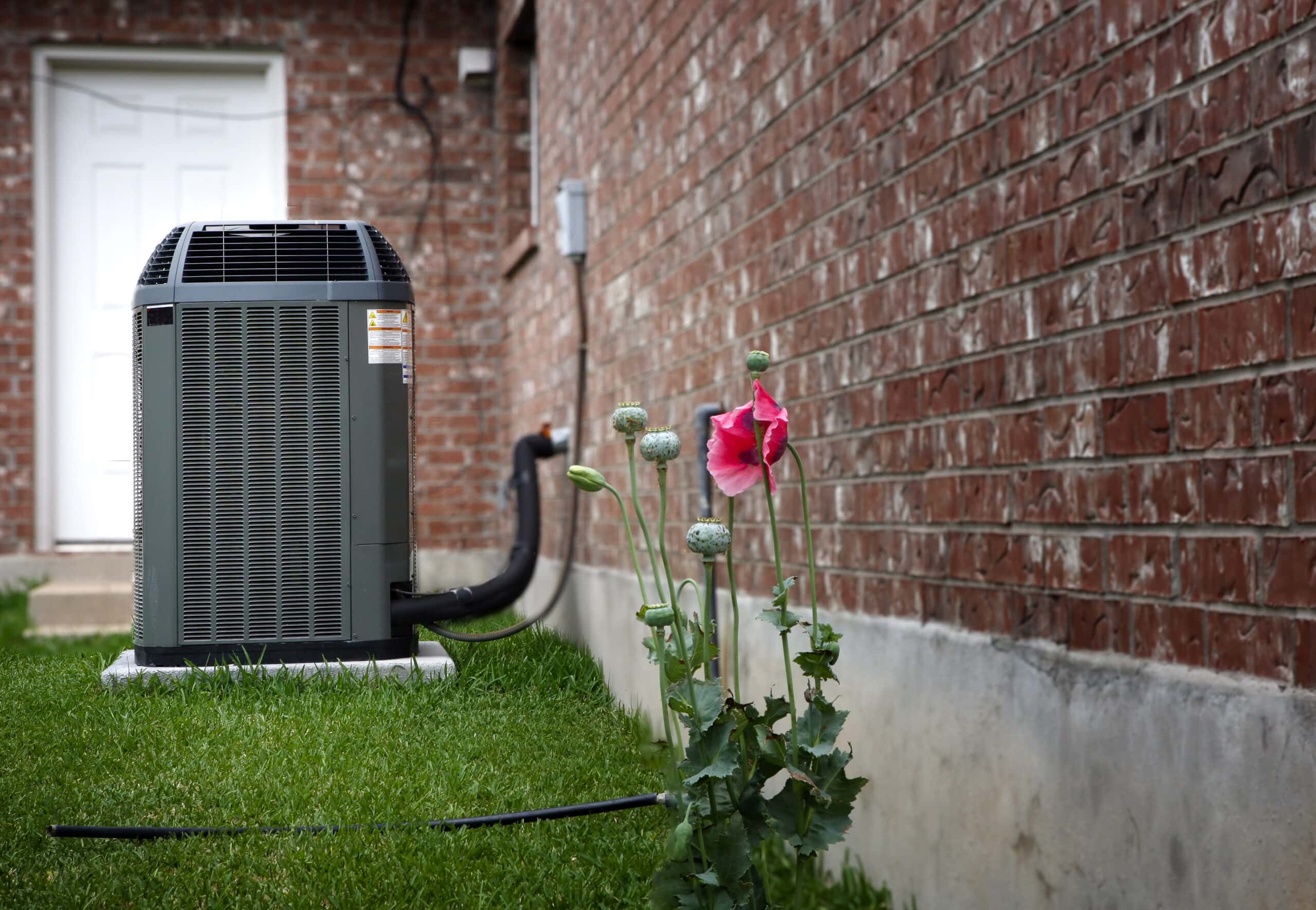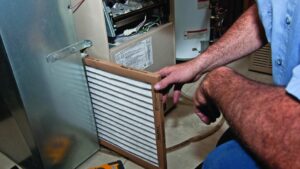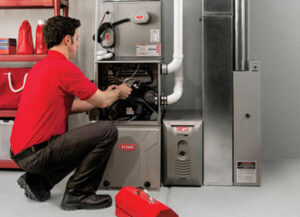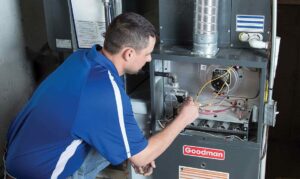How to Choose A Central AC
Purchasing a new central air conditioner is one of the most daunting tasks a homeowner might engage, especially if you’re a novice in dealing with HVAC equipment.
Make the right choice, and you’ll enjoy a comfortable home, a reliable home conditioning system that does not break down every so often, and potentially lower energy bills. On the other end of the spectrum, when you make a wrong choice, you can expect high energy bills, high installation and maintenance fees, costly untimely repairs, and worse still, an HVAC system that is ineffective and inefficient in cooling your home.
Do you want to learn to find the perfect option? Here are our four steps that can simplify your HVAC buying endeavour and significantly help you make the right choice for your home and current (and future) needs.
Related: What does MERV Rating mean?
Step 1: Learn About The Basics of A Central Air Conditioner
First, you should learn about the basics of AC installation to ensure a central AC will suit your needs.
A central AC system requires your home to have an air handler or a furnace. Additionally, it needs properly-sized ductwork to distribute the conditioned air. Installing a central AC in a house with pre-existing ductwork will cost anywhere from $3,500 to $6,000, depending on the unit’s efficiency, size, and AC type you purchase. Your personal preference will also influence the cost of the AC.
However, if your home does not have pre-existing AC ductwork, the project will cost a lot more.
Let’s delve into the steps you should take when choosing a central AC.
Step 2: What Size Air Conditioner Do You Require?
The question of sizing is a crucial question you should answer before everything else. Numerous considerations that influence your energy bills and comfort can help you determine the AC unit that will perfectly suit your home. The most prominent concern is how big your home is.
However, it would help if you considered influencing elements such as:
– How old your house is
– Ductwork size and airflow
– Construction materials in your home
– Insulation amount, efficiency, age, and type
– How many windows do you have and their sizes
– How much solar radiation does your house receive, and where the radiation strikes
With myriad considerations in mind, even homes with identical floor plans and building materials will have different cooling needs. If trees surround your property, they provide a natural shade, which a property devoid of trees does not experience. A house surrounded by trees is naturally cooler, while a house without trees is naturally warmer.
Such simple factors go a long way in determining your AC’s effectiveness and, ultimately, the most suitable size for your home.
We express the power of AC in tons, which describes the AC’s cooling capacity. To determine a rough estimate of the AC size you need, you should compare the AC cooling capacity with your home’s square footage.
A 1-ton AC system can provide ample cooling for 600 to 800 square feet. However, the vast majority of the lower tonnage ACs start at 1.5 tons, increasing in tonnage from there. The average size of single-family homes in Alberta is about 1,520 square feet. For such a house, you need a 2-ton AC.
What Are The Consequences Of Buying And Installing the Wrong AC Unit Size?
Your choice of AC size will impact its price, energy efficiency, energy expenses, comfort, and the equipment’s life.
Installing an undersized unit will not keep up with the humidity and heat. On the other hand, an oversized unit will quickly cool your home and not provide ample time to dehumidify your home. Furthermore, under-sizing and oversizing your AC unit will cause uneven air distribution, higher maintenance and repair costs, and higher energy usage.
Step 3: Which Type Of Central AC Will Suit You Best

The second step is to choose a central AC type. In Canada, there are three common types of central ACs on the market. Their differentiating qualities are their energy efficiencies and price points.
Single-Stage Condensers
These types of ACs operate at full capacity, or they’re off. A single-stage AC can be a significant entry-point AC. However, if you want better efficiency, this unit will not meet your needs.
Dual-Stage Condensers
The dual-stage unit, as the name suggests, operates in two modes. They can run at a lower or higher rate depending on the prevailing weather. The use of two settings helps you run a more efficient central AC compared to the single-stage type. However, they are much cheaper than the variable speed type.
When switching to a dual-stage condenser, ensure your HVAC technician installs a unit compatible with the air handler or indoor furnace, thermostat, and evaporator coil.
Variable Speed Condensers
Variable speed ACs are designed for longer runs rather than turning on and off as the conditions change. As such, they can run all day while offering better energy efficiency than the two AC types above of ACs. However, variable speed ACs are the priciest.
To install the variable speed AC, you must have a matched system. A matched system is an AC unit where the condenser, air handler or furnace, thermostat, and evaporator coil are designed and made to function together.
Step 4: Match Energy Efficiency Rating To Your Needs
Generally, the more an AC unit is energy-efficient, the more you will pay upfront. On the other hand, the more energy-efficient an AC is, the more it will reduce your monthly energy bills. Increased efficiency also translates to a reduced carbon footprint.
As you can appreciate, energy efficiency will also influence the budget. As such, you should understand how to measure energy efficiency and balance it with budgetary needs.
How Do We Measure The Energy Efficiency Of ACs?
We use the Seasonal Energy Efficiency Ratio (SEER) to determine the energy efficiency of an air conditioner. The SEER uses several seasonal temperatures to determine how efficient your AC is, much like how we measure kilometre-per-litre in vehicles.
However, some ACs use the Energy Efficiency Ratio (EER). The EER measurement is similar to the SEER, except it uses the steady outdoor temperature when calculating the AC efficiency.
An AC with high EER and SEER ratings is more energy-efficient, which means your home will be more comfortable.
Popular ACs in Alberta range between 13 and 16 SEER. You can choose an energy efficiency level that suits your needs and personal circumstances.
Step 5: Select A Provider
Having understood considerations such as AC sizes, types, and energy efficiency, it’s time to choose your provider.
An AC technician should be knowledgeable and experienced in handling HVAC systems. Importantly, they should be able to walk you through the steps we’ve discussed above.
Before signing on the dotted line, we recommend that you learn more about the company, their installation services, payment options, services cost, and the warranties they offer.
Additionally, your installer must have the following licenses:
– Gas license
– ESA permits
– Ozone Depletion Prevention (ODP) license
– A 313a refrigeration or 313d residential air conditioning license
Choose The Best Central Air Conditioner – Conclusion
If you’re looking for experienced AC technicians in Alberta, our licensed HVAC experts are ready to help you find the right cooling system that will suit your budget. Contact us today for your free in-house consultation and estimate.






